Crop factor is a term that is thrown around in photography quite a lot. You’re bound to hear it quite often when you ask for advice on composition, compatible lenses for your camera, field of view, and so on and so forth. As a beginner, it’s imperative that you have a good understanding of crop factor. This video from Michromatic will surely help:
What is Crop Factor?
Crop factor is an interesting (and somewhat confusing) formula that governs how the angle of view of a lens is liable to change depending on the camera to which it is attached. More specifically, crop factor is dependent on the size of the sensor that powers a specific camera.
Focal Length
There is something else that also governs crop factor, and that is the focal length of the lens. For the sake of this discussion, we are not going to get into how focal length is measured. What we are going to talk about, however, is how these factors combine to impact the angle of view that you get.
Camera Format
Back in the days of film photography when cameras used the standard 35mm format, all camera gave you the same angle of view, provided you were using the same focal length. In other words, a 50mm lens would give you the same angle of view on a Canon camera as it would on a Nikon camera. A 100mm lens would give you the same angle of view on a Nikon system as on a Canon system.
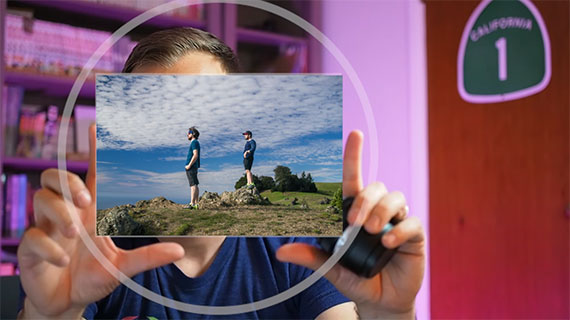
This is what a 35mm sensor captures.
Cut to the modern era and that concept is no longer applicable. Today you have different camera systems and adapters that routinely allow you to use lenses designed for one system on another one. For example, a lens designed for a 35mm camera can be used on a micro four-thirds system with extreme results.
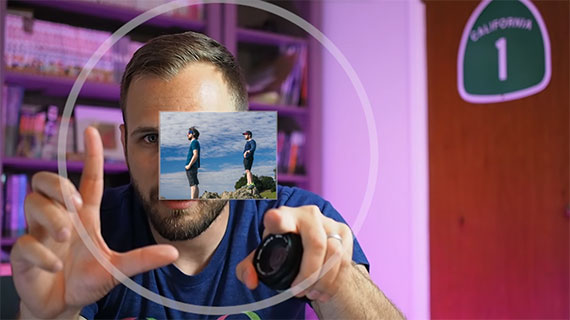
This is the comparative sensor size on a micro four-thirds camera.
A 50mm lens mounted on a 35mm camera gives an angle of view of 47 degrees. A 100mm lens gives an angle of view of 24 degrees on the same 35mm format. When we mount the same 50mm lens on a micro four-thirds system, the angle of view becomes only 24 degrees. Thus the angle of view is the same as that of a 100mm lens on a 35mm camera!
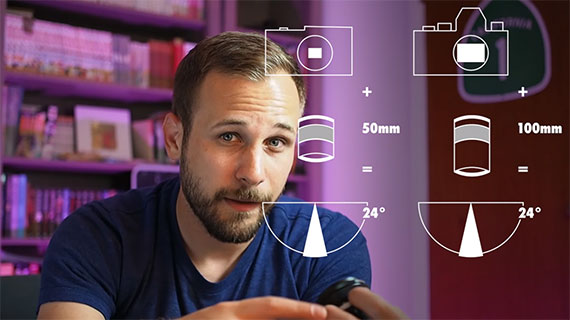
Angle of View on Different Sensor Sizes
This concept is very useful when you’re working with different lenses and camera systems. It allows you to accurately estimate what the angle of view you’re going to get with a particular lens on a particular system. On the other side, if you know the crop factor you can also deduce which lens to pick for a desired angle of view.
Let’s say you need the angle of view that a 50mm lens gives on an APS-C camera. An APS-C camera like that of the Nikon D3300 has a crop factor of 1.5.
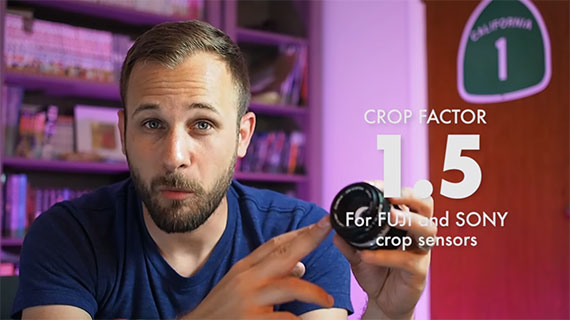
APS-C cameras have a crop factor of 1.5
That means if you mount a 50mm lens (designed for 35m system cameras), the angle of view you’re going to get is 75mm. But if you need the same angle of view that the 50mm lens would give on a 35mm system you divide the desired focal length with the crop factor (50 / 1.5 = 33.33). So you need a 33.33mm lens to get the same angle of view as a 50mm lens would give on a 35mm camera. Since there are no lenses with that focal length, you’d choose the closest you can get, which would be a 35mm lens.
And that’s crop factor demystified for you!
Like This Article?
Don't Miss The Next One!
Join over 100,000 photographers of all experience levels who receive our free photography tips and articles to stay current:
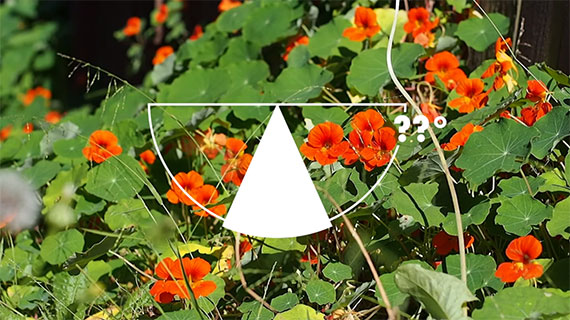






Thank you. That gives a new photographer like me more knowledge and understanding.
This is really cool and been explained in plain English. I believe that many aspiring photographer has been asking these. Keep it up!